-a sumptuary terminal clock featuring, proudly leaning against an architectural sheath punctuated with neo-classical ornamental motifs (consoles with Greek scrolls, clasps, volutes, pastilles and rosettes with acanthus foliage, hanging garlands of ribboned laurel, gadroons, dark beaded grooves), a Vestal chaste. Dressed in the Antique style of a mantle and ample low-cut tunic with abundant folds revealing her blossoming forms, haloed by a diaphanous veil jeweled with rosebuds (Venusian attribute of Love), the mature Priestess seems absorbed in the reading of a precious work of which she browses, in a suspended gesture, the pages. Standing out against a dark mesh of quatrefoil flowers, three medallions held by a luxuriant knot of pleated Louis XVI ribbon display, profiled in cameos, the effigies of an ancient divinity (the beautiful Vesta, jeweled, her hair pulled up in a bun surrounded by a ceryphalus, presiding over marital and domestic harmony) and a couple of young married couples. Centered in the sheath/marital altar, the dial of the clock set on its bezel with a twisted braid indicates on a background veneered with cherry red marble the hours in Roman numerals by two needles with dart patterns.
-a Pair of Candelabra with seven lights and six elegantly crafted leafy arms of light with an iconographic and aesthetic aspect directly inspired by models created in the 1770s by the sculptor Claude Michel, known as Clodion (1738-1814) today preserved in major museum institutions (marble vase from the Wallace Collection in London). Adopting the slightly potbellied silhouette of a vase set on its pedestal with a torus of grained ribbon laurel and decorated on its base with florets, stylized acanthus scrolls alternating with bell motifs, each candelabra unfolds in its middle part a chiseled frieze in half-relief depicting, in a rustic autumnal environment, satyrals, putti crowned with flowers or grape branches engaging in playful gathering activities or playfully heckling, thyrsus in hand, a goat. These jovial childish Bacchanalia are overlooked by two chimerical heads of horned animals with bearded features constituting the handles of the Vase. Connected by laurel garlands arranged in a festoon, these enclose their ornate neck from which blossoms, around a baluster shaft forming a torch topped with a flame motif (allusion to the fire maintained by the Vestal Virgins), six arms from light. Tiered, their composition elegantly combines “Arabesque” windings of buds, florets and scrolls of leafy acanthus, twisted motifs. Binets and bobèches are hemmed with corollas of lanceolate leaves, water leaves, small florets, pearls.
Forming a sculptural work or Candelabra Vases, these three pieces of neo-Louis XVI silhouette in silvered and gilded bronze with a "luxury of carving that one admires" are based on sumptuous molded bases in cherry red marble - oblong in shape with projection on the facade or circular - similarly surrounded by a string of pearls, a generous torus of ribboned laurel. Adorned with an opulent mirror cartridge festooned with leafy scrolls, delicately flowered garlands and topped with a pretty bow, these marmoreal bodies with sides covered with leafy scrolls brightened with berries and flowers forming a base also rest - for the watch piece - on four spinning top legs ringed with pearls. These ornamental patterns in gilded bronze chiseled in all identical points give our Fireplace Trim all its plastic coherence as well as the exceptional integrity of its model.
-----------------------
A Fleuron signed by Lemerle-Charpentier, a 19th century Parisian “maker-artist”:
Of undeniable formal beauty as well as great technical prowess due to its juxtaposition of gilded and silvered bronze, this sumptuous Fireplace Trim dating from the 1870s-1880s is to be placed among the jewels designed and produced by the Parisian Maison de Bronzes of art furniture Lemerle-Charpentier, praised many times since its foundation during the prestigious Universal Exhibitions of the second half of the 19th century for its "highly artistic" models, always "well understood, either in terms of decoration, or in terms of of execution". Or, in view of this most thematically and aesthetically homogeneous set, of the two.
Imbued with a Louis XVI touch of refined neo-classicism, perfectly mastered, this masterful composition crowned with the visual richness provided by the perfect combination of its materials proves characteristic of the way in which these talented Parisian artistic bronze manufacturers - in the occurrence Jean-Antoine Lemerle, known as Lemerle-Charpentier, 1829-?, successor of Nicolas-Germain Charpentier, 1807-1864- in their time qualified as "Manufacturers-Artists" knew how to combine, marry with ingenuity ancient iconographic referents (figure of the Vestal, Bacchic procession) or notorious (tasty models created by Clodion), ornamental repertoire sought in order to create an original work adjusted to the dreamily affable tastes of the elitist European society of the time.
In view of the whole presented which it bears - on the plate of the watch piece - the stamp, the wise considerations of the rapporteurs of the Universal Exhibition of 1867 on the "very good and very estimable" Maison Lemerle-Charpentier take all their scale: "(it) marks its products with a very particular stamp which is obviously imprinted on it by the demands of a clientele who come more from foreign countries than from France" and "enhances the French reputation" (Studies on the 'Exhibition of 1867, or Archives of Industry in the 19th century, 1867, p.224). Today, many national and European museum institutions are proud of the artistic achievements of this distinguished Parisian establishment carrying the splendor of the 19th century.
* LEMERLE ET CHARPENTIER, Manufacturers of Art Bronzes in Paris.
Founded in 1834 by Nicolas-Germain Charpentier (Paris, 1807-1864) a worker-engraver who became a manufacturer of furniture bronzes, this House successively established in the Parisian capital 6, rue d'Orléans au Marais then 8, rue Charlot (1853) knew how to conquer during the Exhibitions of Industrial Products (1849, Silver Medal) and the Universal Exhibitions (1855, 1st Class Medal reiterated in 1862) honors and fame by presenting 'beautiful' models of furnishing bronzes - "clocks, candelabras, torchieres, chandeliers, etc. in the Louis , Albert-Ernest Carrier-Belleuse, Louis-Charles Buhot).
Like other renowned establishments (Denière, Paillard, Vittoz, Marchand, Raingo, Lerolle, etc.), the House maintained its prosperous rise until 1890 with Jean-Antoine Lemerle (1829-?), partner - from 1855 , by the creation of the Company Charpentier et Cie which in 1874 became Lemerle-Charpentier et Cie-and successor to his father-in-law. Talented, he finalized the House's "cursus honorum" by obtaining a Gold Medal at the Paris Universal Exhibition in 1878, crowning, in addition to the "trimmings, vases, torches" presented, a striking and monumental "Louis sheath clock XVI" representing "on a console a Goddess holding with the end of her arms a Lyre on which the dial stands out". Designed in close collaboration with the sculptor Eugène Piat (1827-1903), this work executed in marble, gilded and silvered bronze was rightly considered “one of the wonders of the Exhibition”. “Highly admired”, “applauded” for its technical prowess as well as for the “originality of its design”, she saluted “the audacity of Mr. Lemerle’s new work”, worthy representative of an emeritus Parisian house of “bronzes of luxury art and furnishings.
--------------------
High quality Parisian work of Louis XVI inspiration from the second half of the 19th century by the Maison de bronzes d'art et d'furniture Lemerle-Charpentier et Cie located in Paris, 8, rue Charlot. Circa 1870-1880.
Marks and Signature: Movement bearing the hollow stamp on the plate: "LEMERLE CHARPENTIER/Fant (for Manufacturer) of BRONZES/PARIS" associated with the number "11" (model number?). Stamp of the Watchmaker "JAPY FRERES ET CIE/Grande Médaille d'Honneur" -The dial bears, inscribed in capital letters, the name of "JEANJEAN/ PARIS" - This surname does not correspond to a Watchmaker listed for the period in the 'Almanac du Commerce,..., this is probably the name of the Marbrier, collaborator of the watch piece designed by Maison Lemerle-Charpentier.
Materials: Italian cherry red marble; gilded and silvered bronze; glass and gilded copper.
Dimensions: Pendulum: H.: 69 cm;-L.: 59 cm; Pr.: 23 cm. Candelabra: H.: 79 cm; Bouquet diameter: 31cm
Very nice original condition.


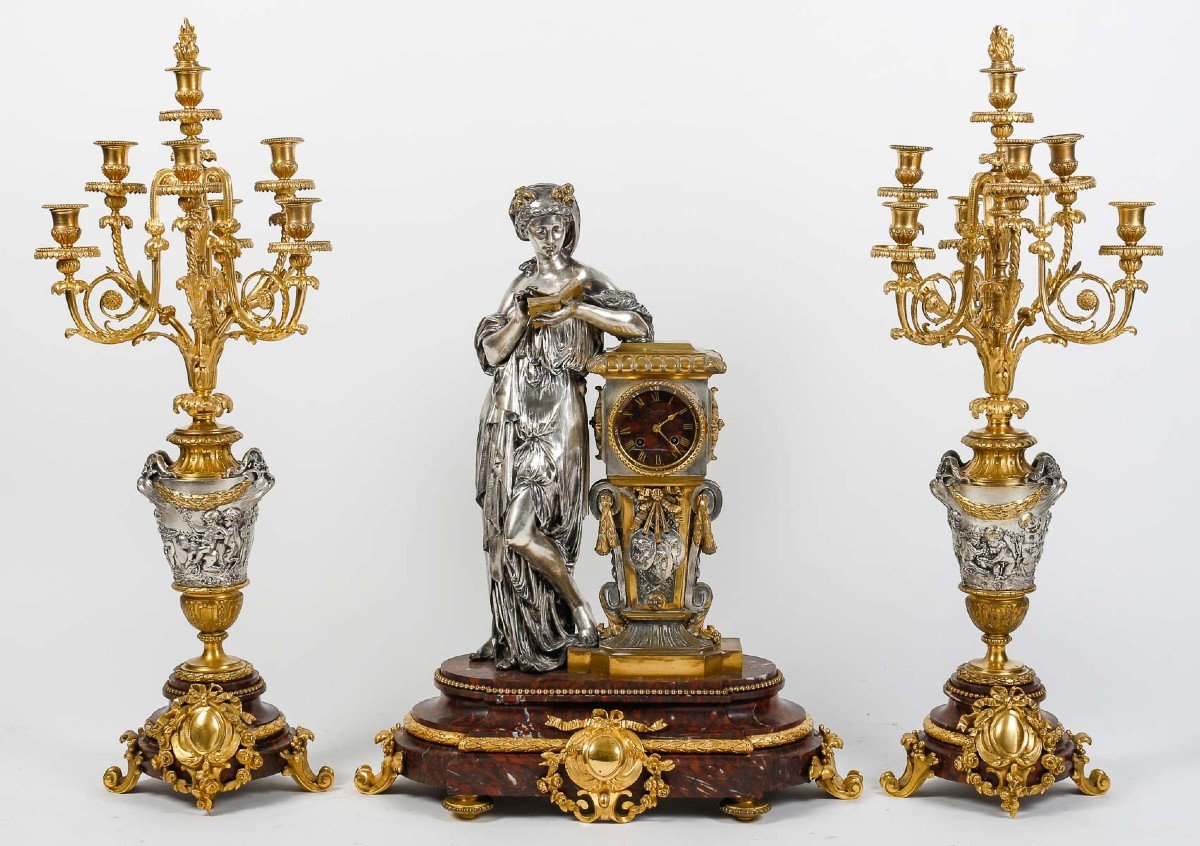
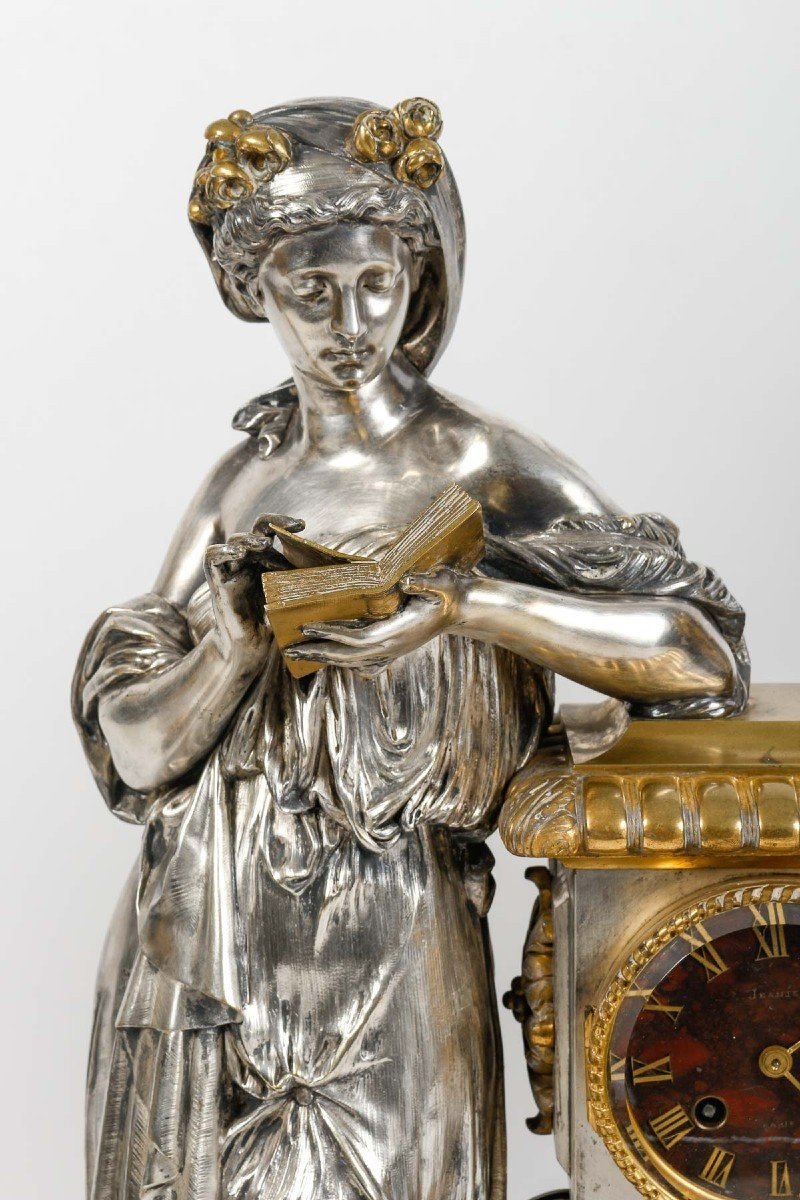

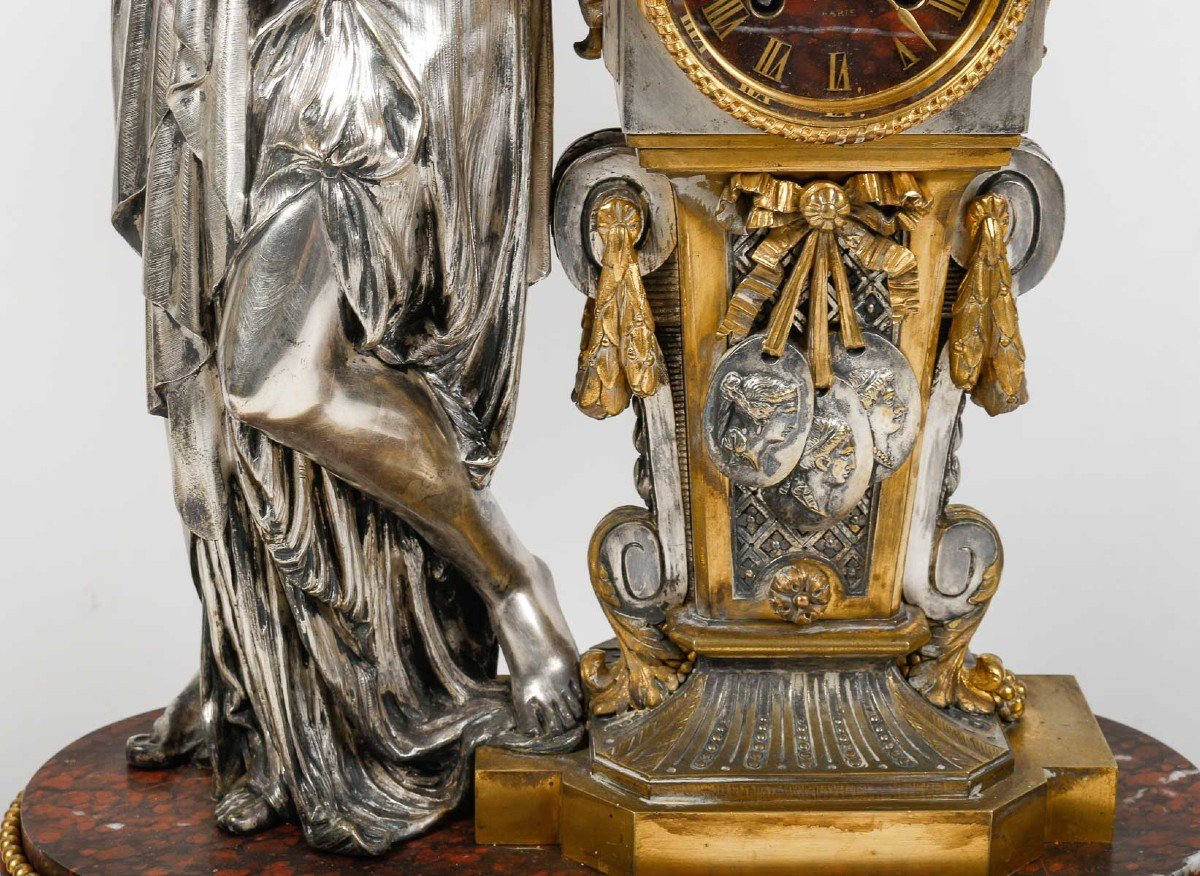
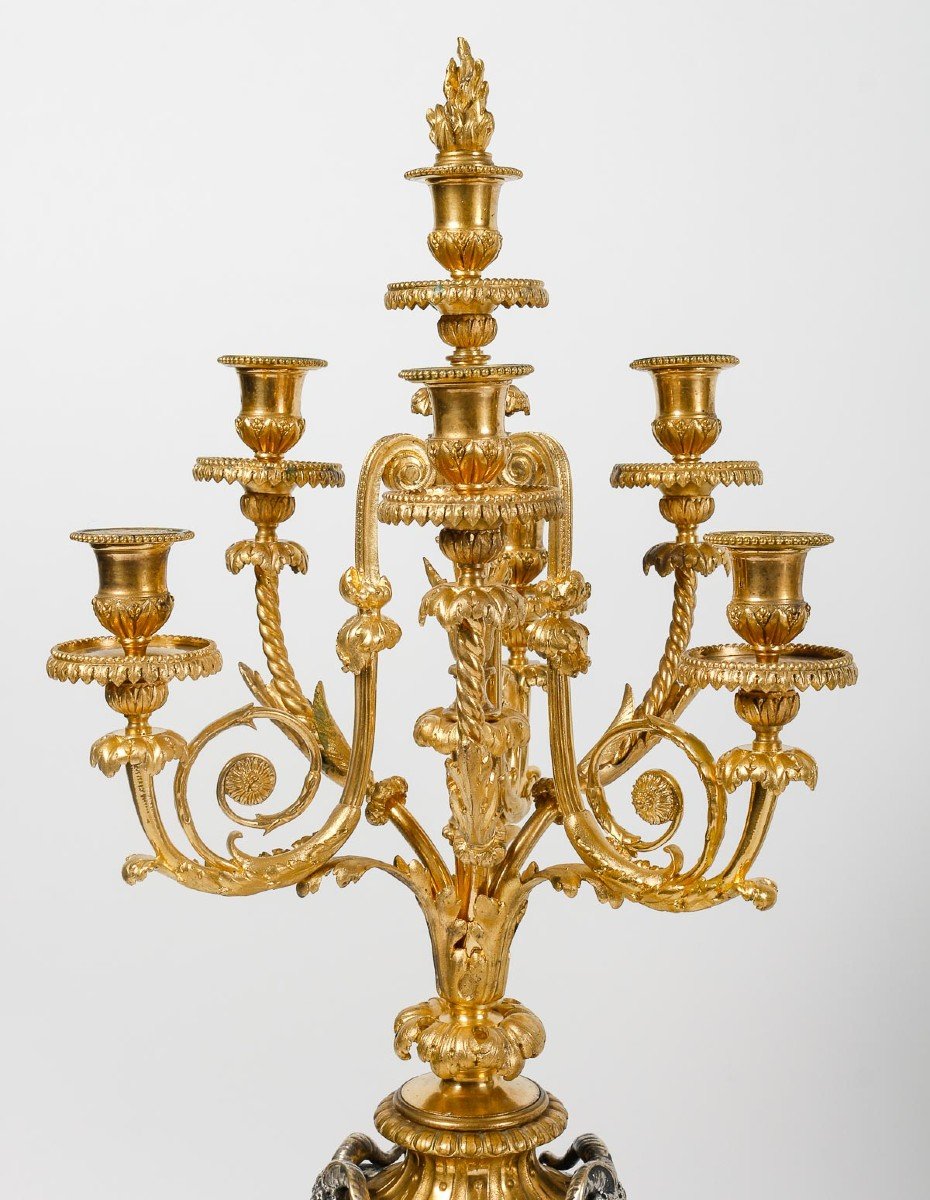
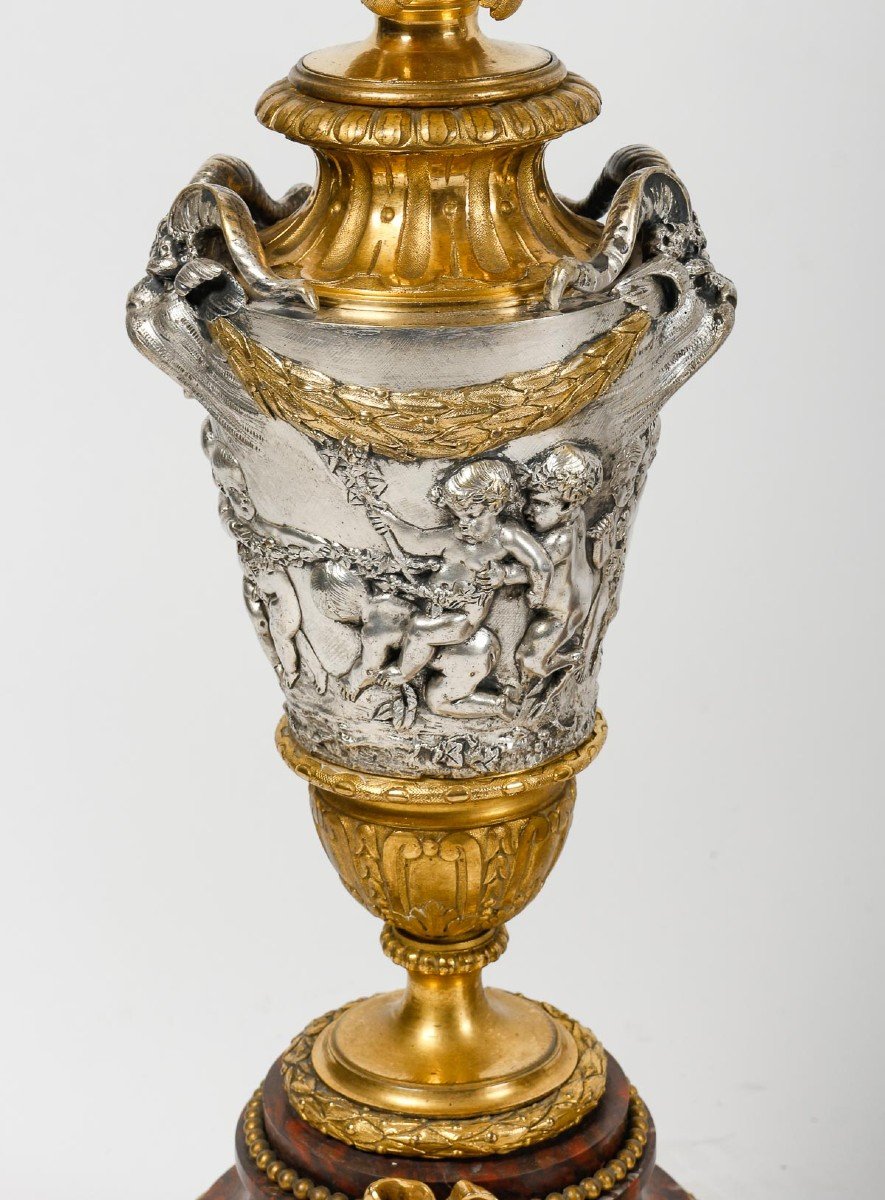
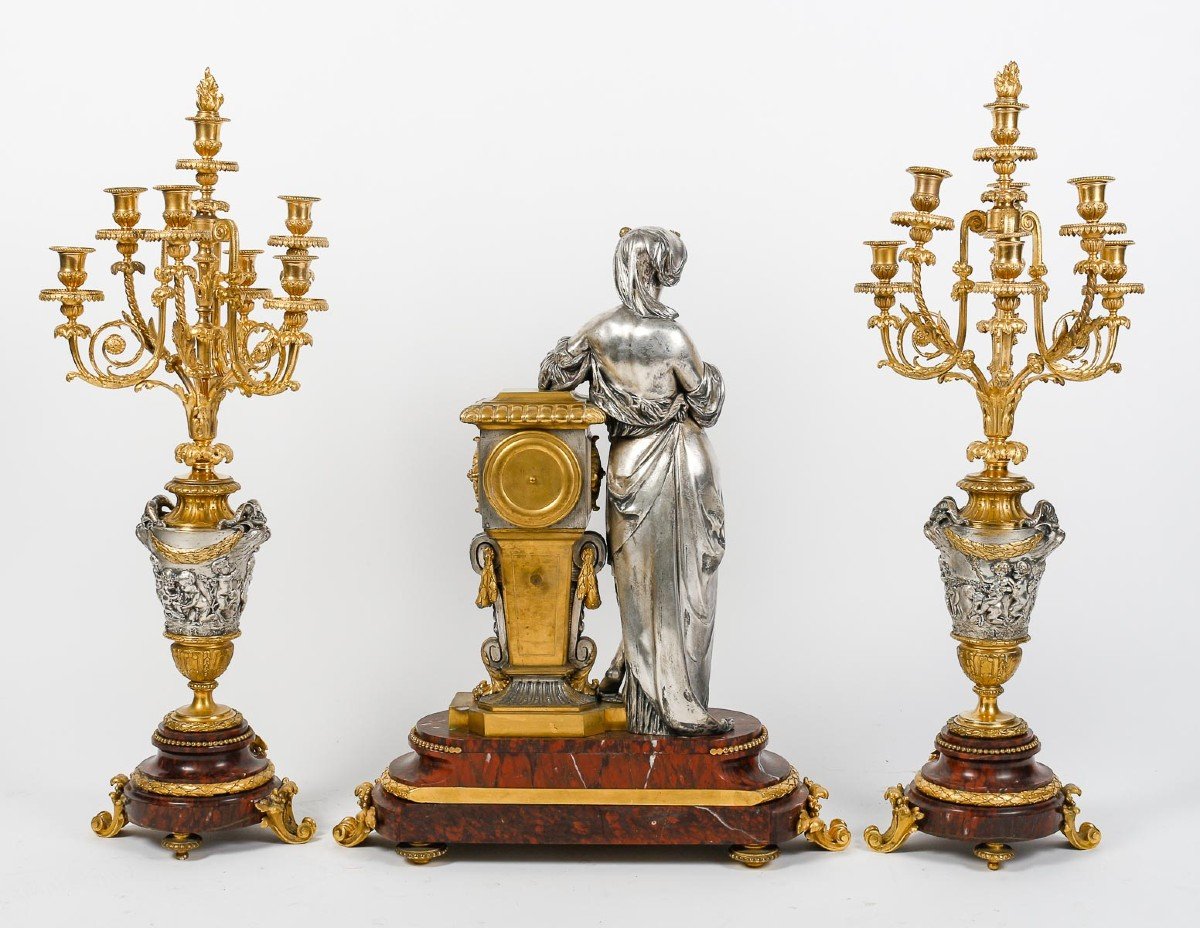
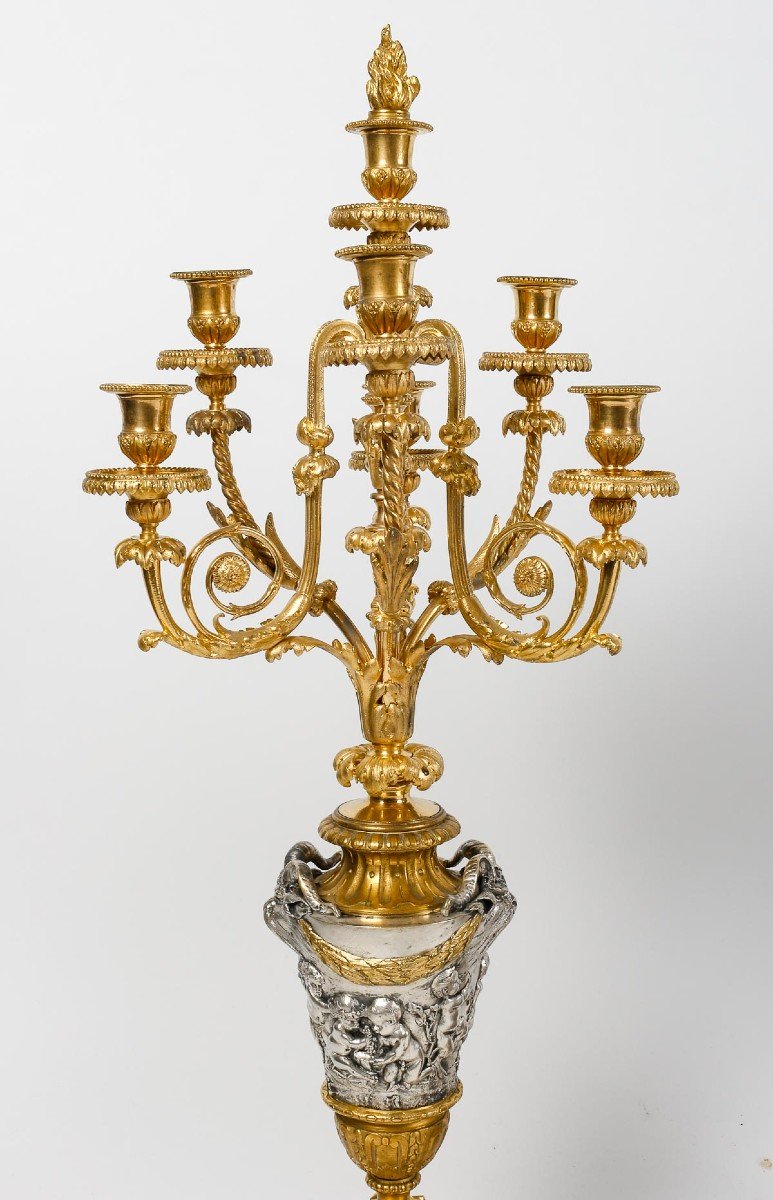
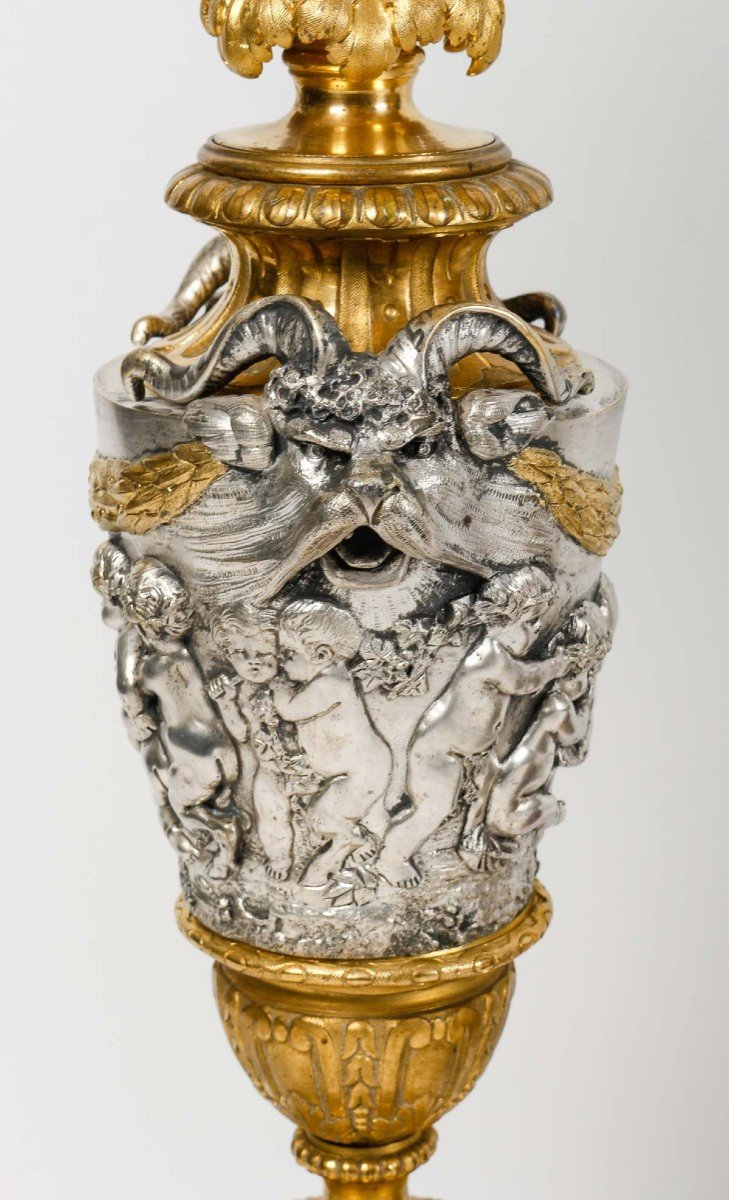
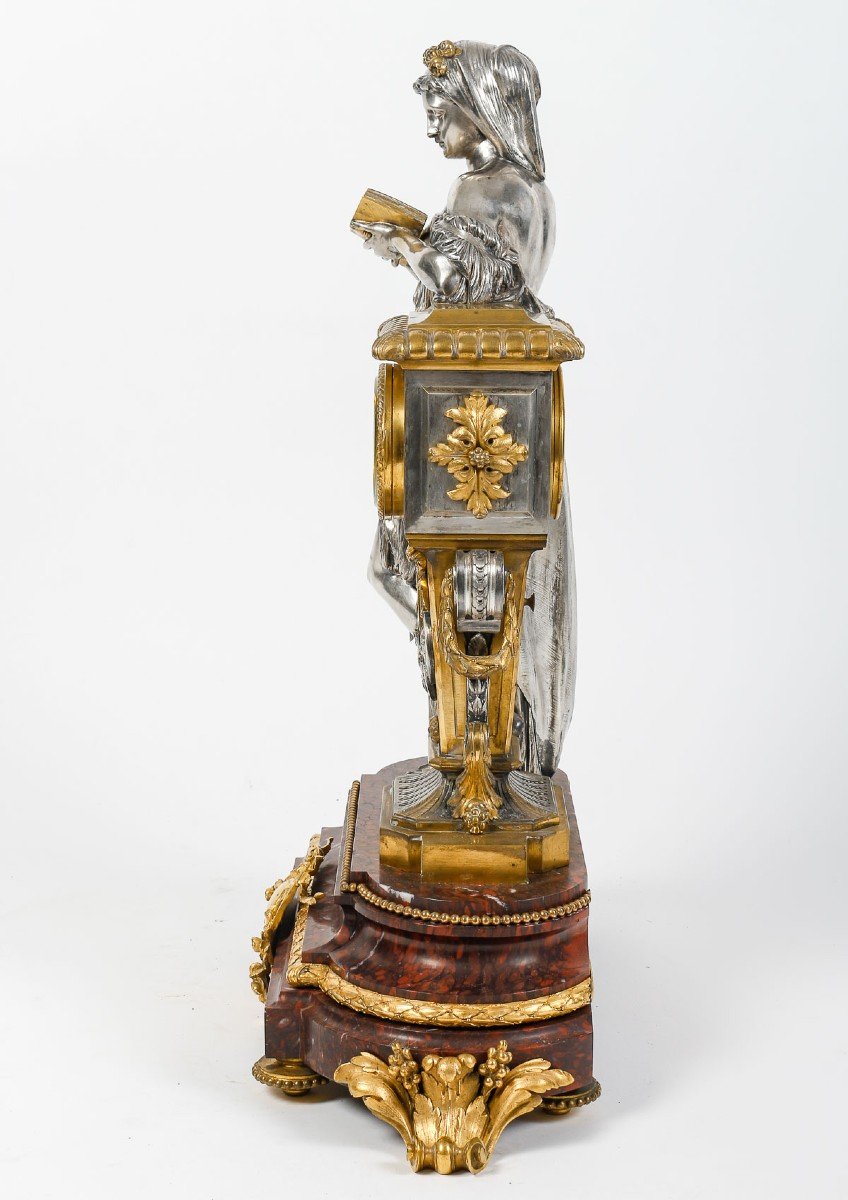
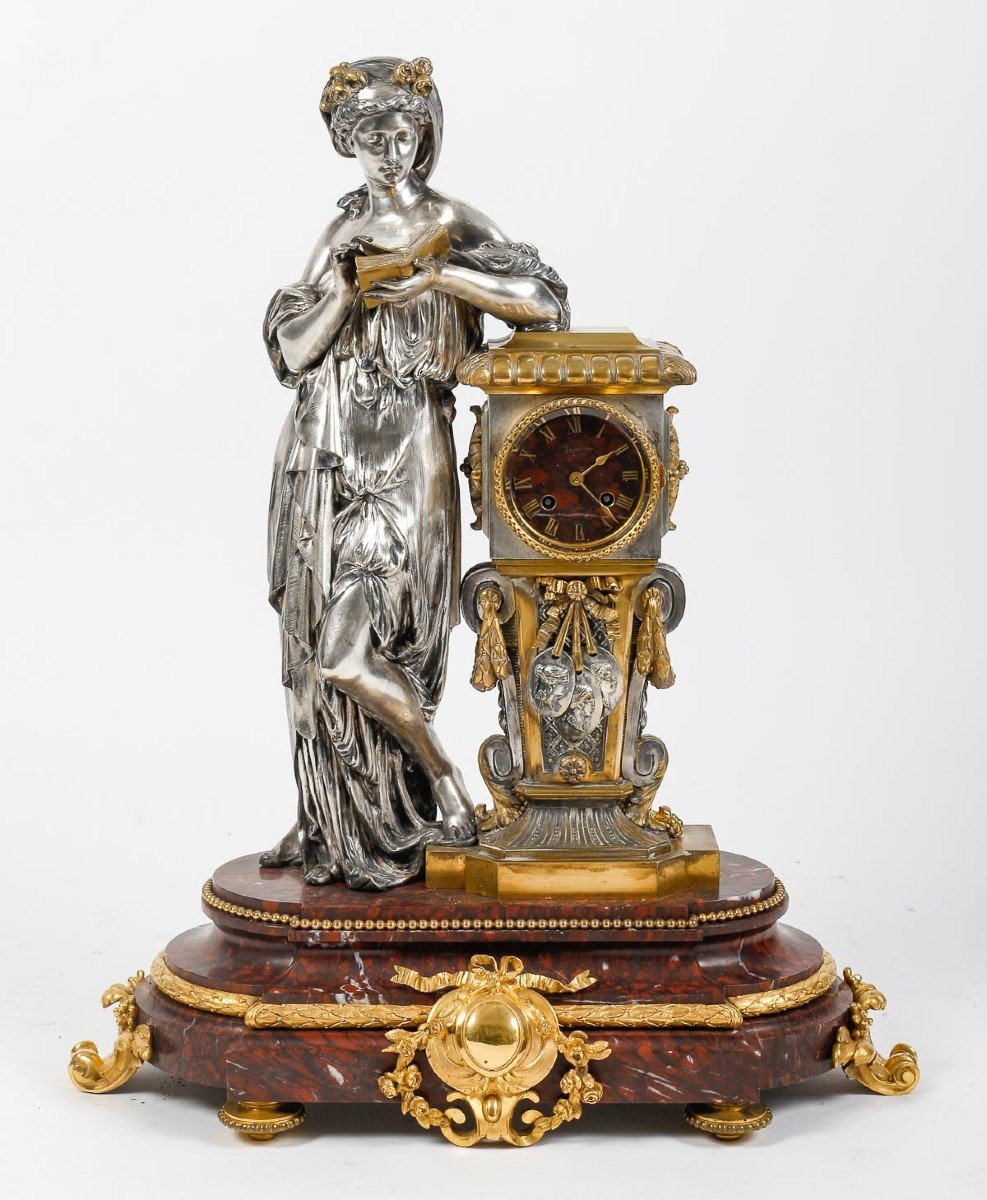
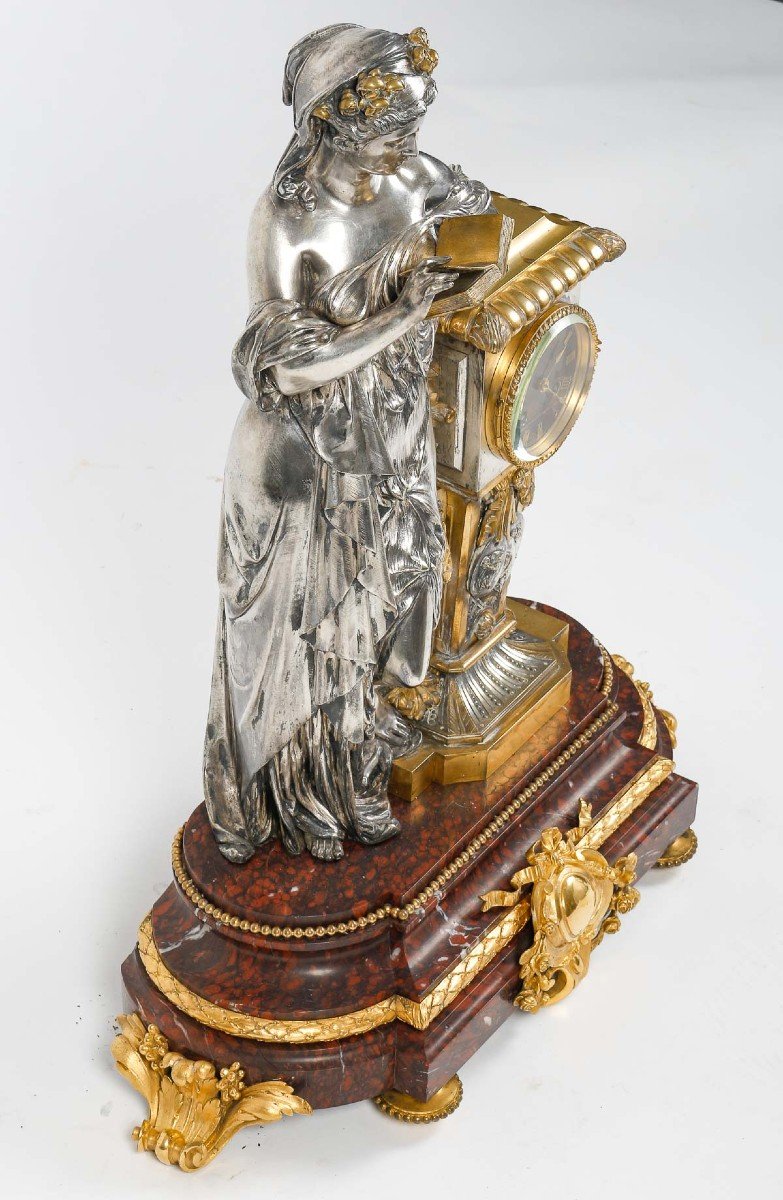


















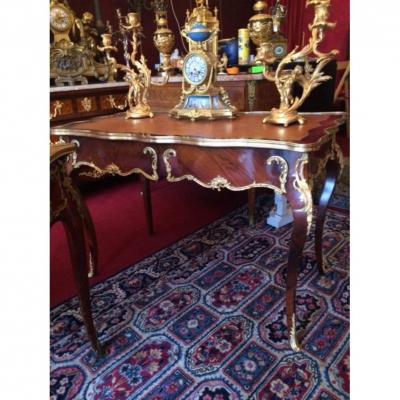
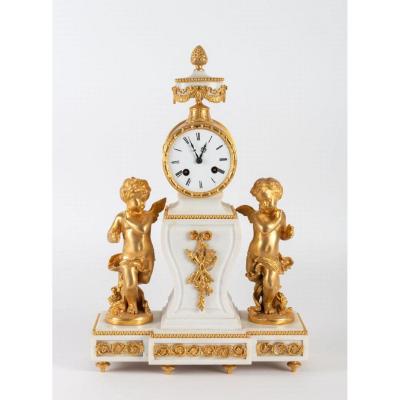


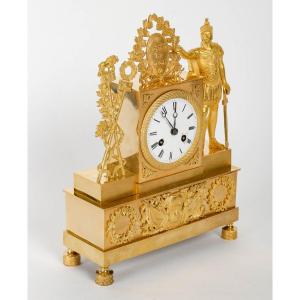


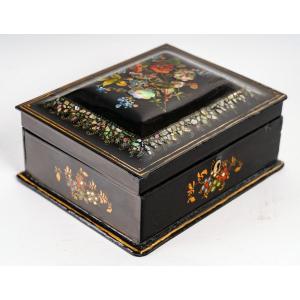


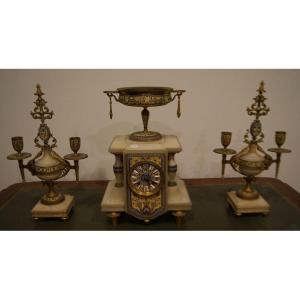
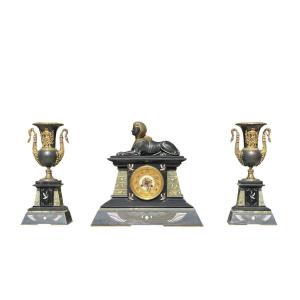





 Le Magazine de PROANTIC
Le Magazine de PROANTIC TRÉSORS Magazine
TRÉSORS Magazine Rivista Artiquariato
Rivista Artiquariato